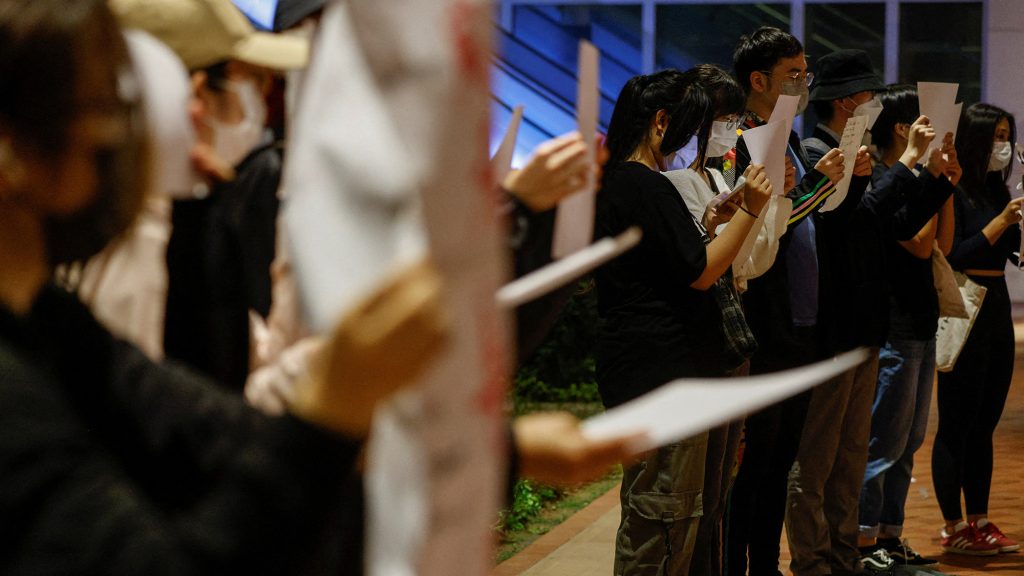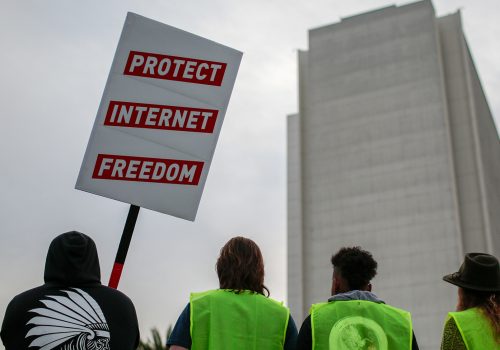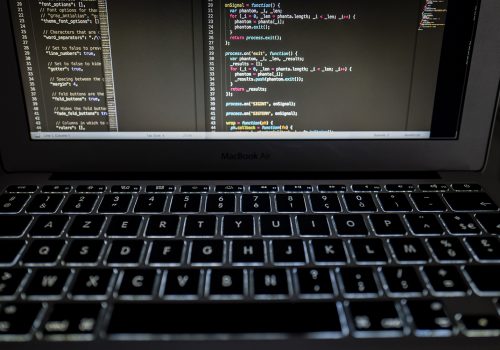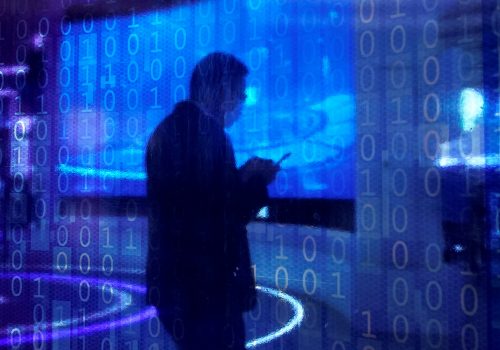In contrast to many countries currently living with the COVID-19 virus, Chinese leader Xi Jinping has tried to reduce infections to zero with his “dynamic” zero-COVID policy. Preventing infections in China over the past few years, according to the Chinese government, meant locking people in their homes and welding their doors, sending those exposed to COVID-19 to quarantine camps, and lining millions of people up for tests each day, sometimes in the freezing cold. Xi’s policy has in turn contributed to China’s slower-than-predicted economic growth rate and high youth unemployment.
After a fire erupted in November in an apartment building in Urumqi, Xinjiang—a city that was under a one-hundred-day lockdown—and ten residents perished, protests spread widely across major cities in China. Protesters clashed with police and epidemic workers, calling for the end of the lockdowns and some even demanding Xi’s resignation. Since the peak of the protests, Beijing has detailed plans to relax COVID-19 restrictions and reduce testing requirements.
To discuss the recent lockdown demonstrations in China, DFRLab Resident China Fellow Kenton Thibaut moderated a panel at the Digital Forensic Research Lab’s 360/StratCom this year. Maya Wang, associate director at Human Rights Watch, observed that dissatisfaction with the COVID-19 restrictions has grown steadily over the three years of strict enforcement. “The bottled-up energy essentially exploded,” she remarked. However, it was not just the fire that prompted the unrest. Wang explained that prior grievances also laid the groundwork for the protests today, such as the twenty-seven people killed in the crash of a bus carrying people to quarantine in September and the Sitong Bridge protest before the China’s Twentieth Communist Party Congress.
On why Xinjiang became the focal point for the large protests, Sheena Greitens, associate professor at the LBJ School of University of Texas Austin, stated that Xinjiang was a test case for Xi’s national-security concept. According to Greitens, the Chinese leader’s strategic goal appeared to be to prevent large-scale protests from spreading between locations, economic classes, and ethnic groups. Yet the fire, Greitens added, brought commonality and solidarity between the Han majority in the rest of China and the Uyghur minority in Xinjiang. She added that these protests tested the security apparatus and revealed shortcomings in the system. “I don’t think that this means the system overall has failed,” said Greitens. The capabilities the Chinese government have built are still useful for interrupting protests and punishing individuals who have participated.
Xiao Qiang, research scientist and the founder of US-based China Digital Times, also underscored the importance of the Sitong Bridge protests for inspiring the messages in the recent protests. Xiao said the Sitong Bridge and the current demonstrations were “so different from previous ones in the last thirty years” because their focus went beyond COVID-19: They also targeted the government’s censorship and Xi’s leadership. He also recounted how information about the protests flowed across borders. Protesters circumvented the Chinese internet firewall using virtual private networks (VPNs) to send videos to volunteer activists worldwide, he explained. For example, a Twitter user in Italy quickly reposted protest videos sent by protesters and then sent the videos “immediately back to China so that people in the city almost in real time know where the protests are,” Xiao explained. This fluid information environment, he added, overwhelmed the Chinese censorship mechanisms.
While the crackdowns on these large-scale mobilizations have been much less harsh than crackdowns in 1989, Greitens cautioned against painting the regime as becoming more tolerant of opposition, remarking that the Chinese Communist Party has shifted punishment from public spheres, such as the protest areas, to “individualized, targeted private spaces that we can’t see.”
As the protests wound down, some observers were disappointed by the results and that there has been no structural political change. But Wang offered more nuance: “Even in the West… things do not change overnight,” noted Wang. “People should not expect any differently from China. People should also not discount the inspiration that these protests brought… The protests are important this time because they give people hope they are not alone,” she said.
As everyone in China has been affected by the lockdowns in some way, the protests have also included people from all walks of life. Xiao highlighted the participation of students across eighty university campuses, indicating the extent to which young people disagree with the direction Xi is taking China. The students, he said, do not see the same hope for their future given what they perceive as China’s current trajectory. The gender dynamics underpinning the protests were also striking, with Wang noting that women in China are becoming more vocal and organizing protests: “The participation of women is often the central muscle that keeps these movements going in many parts of the world,” she said.
Further reading
Thu, Dec 8, 2022
The call for coordinated action for a free, open, and interoperable internet
360/StratCom By
The DFRLab, as part of its annual 360/StratCom event, convened a discussion about the FOC, including the need to coordinate action to protect a free, open, secure, and interoperable internet.
Wed, Dec 7, 2022
Camille Stewart breaks down the Office of the National Cyber Director’s whole-of-society strategy
Transcript By
Camille Stewart Gloster, the inaugural deputy national cyber director for technology & ecosystem, is defining the role that the United States' new Office of the National Cyber Director can play.
Wed, Dec 7, 2022
Can the Freedom Online Coalition live up to its potential?
Transcript By
The Freedom Online Coalition has operated with varied success. As the US prepares to take over as chair of the body, civil society leaders who helped launch and shape the Coalition discuss how it can best be leveraged to advance a proactively democratic digital world.
Image: People hold sheets of paper in protest over coronavirus disease (COVID-19) restrictions in mainland China, during a commemoration of the victims of a fire in Urumqi, at the University of Hong Kong (HKU), in Hong Kong, China November 29, 2022. REUTERS/Tyrone Siu



